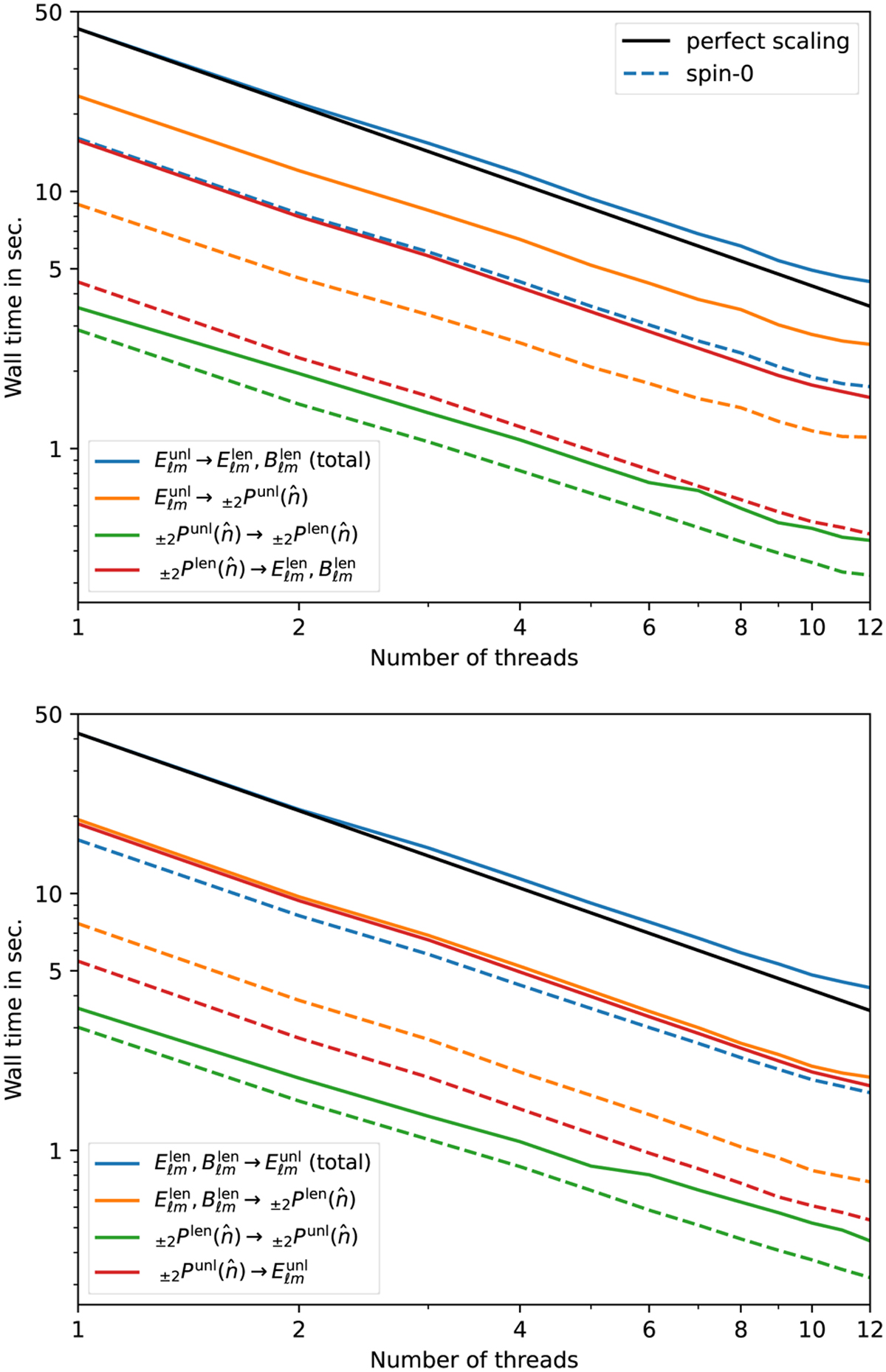Fig. 2

Download original image
Execution time of different transforms as a function of number of threads used for the calculation. Upper panel: scaling of a single forward-lensing execution time, producing lensed spherical harmonic coefficients from their unlensed counterparts. The solid blue line shows the total time of producing ![]() from
from ![]() in the polarized spin-2 case, and the solid orange, green, and red curves show the synthesis, interpolation proper and final backward SHT contributions. The black line shows a perfect scaling with the inverse thread number for comparison and the scaling of each and every operation is almost perfect. Dashed lines show the spin-0 results, for which harmonic transforms are substantially faster. The forward-lensing operation is built out of remapping on a pixelized sphere (orange and green, the latter being the remapping step, properly speaking), and sending it back to harmonic space with a standard spin-2 spherical harmonic transform (red). See the text for the precise specifications. These curves do not include the cost of calculating the deflected angles from the deflection field spherical harmonic coefficients, which is comparable to that of a spin-1 forward spherical harmonic transform. Lower panel: corresponding results for the adjoint operation (note that while the adjoint operation is closely related to delensing, this is not the operation inverse to forward lensing; see text). The dashed lines show the corresponding results for the spin-0 case.
in the polarized spin-2 case, and the solid orange, green, and red curves show the synthesis, interpolation proper and final backward SHT contributions. The black line shows a perfect scaling with the inverse thread number for comparison and the scaling of each and every operation is almost perfect. Dashed lines show the spin-0 results, for which harmonic transforms are substantially faster. The forward-lensing operation is built out of remapping on a pixelized sphere (orange and green, the latter being the remapping step, properly speaking), and sending it back to harmonic space with a standard spin-2 spherical harmonic transform (red). See the text for the precise specifications. These curves do not include the cost of calculating the deflected angles from the deflection field spherical harmonic coefficients, which is comparable to that of a spin-1 forward spherical harmonic transform. Lower panel: corresponding results for the adjoint operation (note that while the adjoint operation is closely related to delensing, this is not the operation inverse to forward lensing; see text). The dashed lines show the corresponding results for the spin-0 case.
Current usage metrics show cumulative count of Article Views (full-text article views including HTML views, PDF and ePub downloads, according to the available data) and Abstracts Views on Vision4Press platform.
Data correspond to usage on the plateform after 2015. The current usage metrics is available 48-96 hours after online publication and is updated daily on week days.
Initial download of the metrics may take a while.


